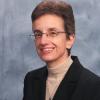To bring science and religion together into a new unity requires a new level of consciousness, a new type of person, one who is free of the Adam myth and its corresponding misogyny. This is where transhumanism can play a profound role.
Maryknoll Sr. Madeline Dorsey had been ministering to the poor in El Salvador for five years when Ursuline Sr. Dorothy Kazel, lay missioner Jean Donovan, and Maryknoll Srs. Maura Clarke and Ita Ford were kidnapped, raped and murdered there on Dec. 2, 1980. GSR talked to her about those times, her service to people in need – and courage.
GSR Today - Good Shepherd sisters help refugees, Mary Jo McConahay marks the 25th anniversary of the slaying of six Jesuits in El Salvador and an expected U.S. immigration reform announcement are in the news.
GSR Today - Boston Cardinal Seán O'Malley called the Vatican investigation of American women religious “a disaster.” Speaking to CBS 60 Minutes interviewer Norah O'Donnell for Sunday night’s episode, O’Donnell said the investigation by the Congregation for the Doctrine of the Faith “looked like a crackdown from men at the Vatican,” and O’Malley responded, “A disaster.”
A commune in Vietnam's Central Highlands is home to about 4,000 people of three ethnic minorities. Amid poverty and poor nutrition or opportunities, Servants of the Holy Spirit help provide as many as they can with the basics of life. They serve as health care and education providers, as well as a safety net for early childhood care. And they do it out of love.
"Wasting food does not just take food from the mouths of the poor, it has lasting impacts on the future of life on Earth."
GSR Today - We all know one or two, probably more, women religious who could be described as – dare we say it? – gutsy. Add 70-year-old Sr. Jane Keogh to that list.
GSR Today - The holiday season is approaching, and Global Sisters Report wants your suggestions for crafts and goods that support Catholic sisters – and women’s empowerment.
As a young woman religious, you get used to telling your vocation story. Recently, I was invited to explore vocation in a broader sense and, on a deeper level, to consider how the call to leadership is being issued in the church today. By and large, leadership is a topic overlooked in regard to young adults in the church today. I can’t count how many times I have been at meetings where it’s been conjectured about what church will be passed on to the next generation. Questions and murky answers fly back and forth as if I and any other young adults are not seated there.
The number of Ebola cases has leveled or dropped in Guinea and Liberia, according to the World Health Organization, but have increased dramatically in Sierra Leone. Catholic Relief Services is working on educating citizens there to change this trend. Holy Rosary sisters, who operate a counseling and peace center in Bo for vulnerable girls, reported last month that 70 percent of people in the country believed that Ebola had something political about it.



